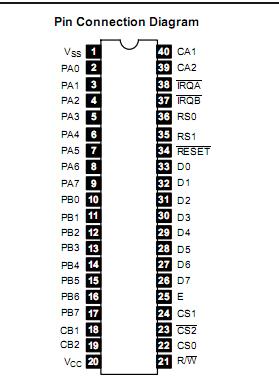NTE6821: Features: 8Bit Bidirectional Data Bus for Communication with the MPUTwo Bidirectional 8Bit Buses for Interface to PeripheralsTwo Programmed Control RegistersTwo Programmed Data Direction RegistersFo...
floor Price/Ceiling Price
- Part Number:
- NTE6821
- Supply Ability:
- 5000
Price Break
- Qty
- 1~5000
- Unit Price
- Negotiable
- Processing time
- 15 Days
SeekIC Buyer Protection PLUS - newly updated for 2013!
- Escrow Protection.
- Guaranteed refunds.
- Secure payments.
- Learn more >>
Month Sales
268 Transactions
Payment Methods
All payment methods are secure and covered by SeekIC Buyer Protection PLUS.

 NTE6821 Data Sheet
NTE6821 Data Sheet







